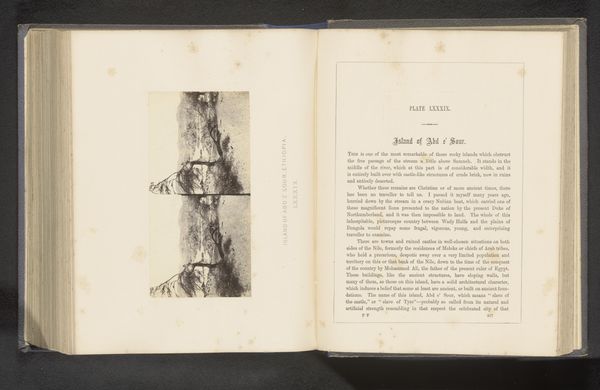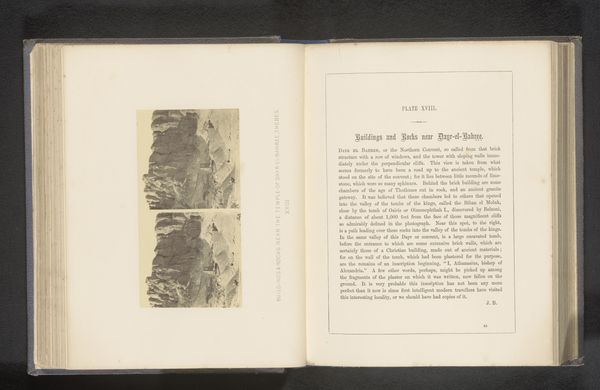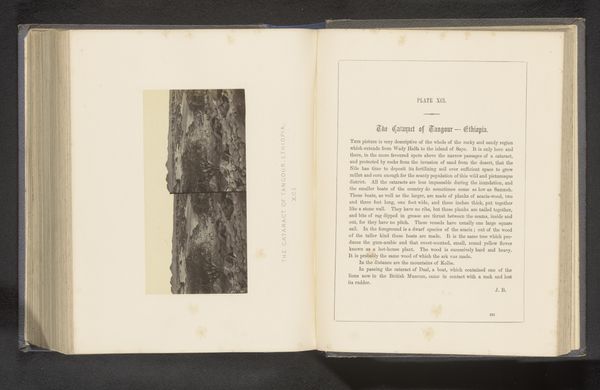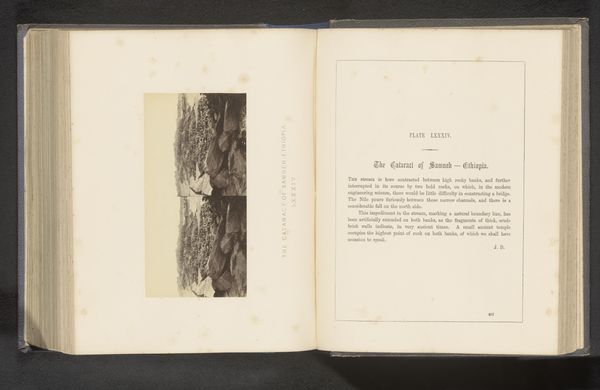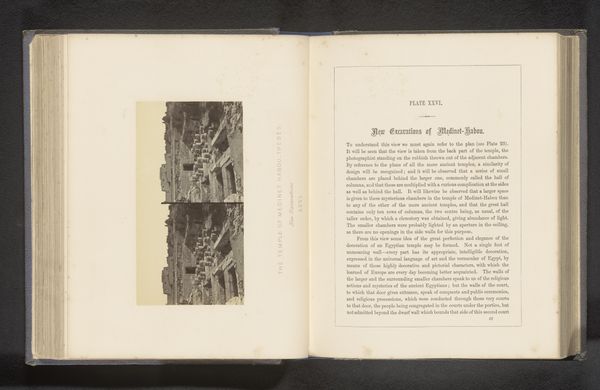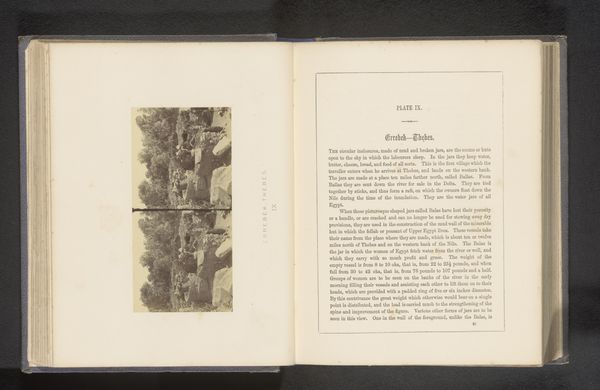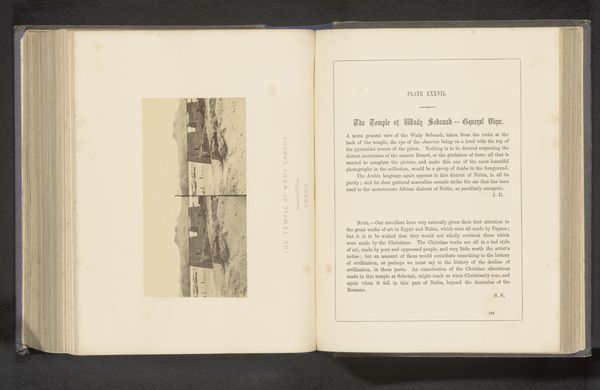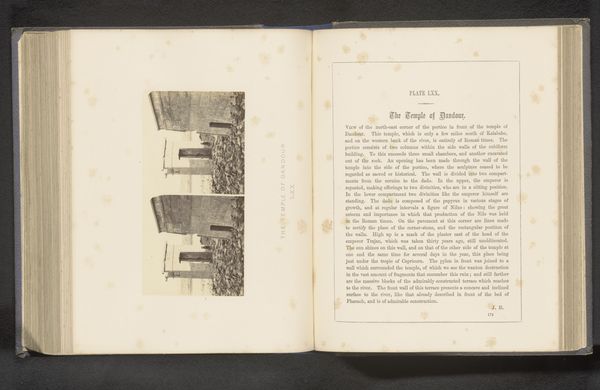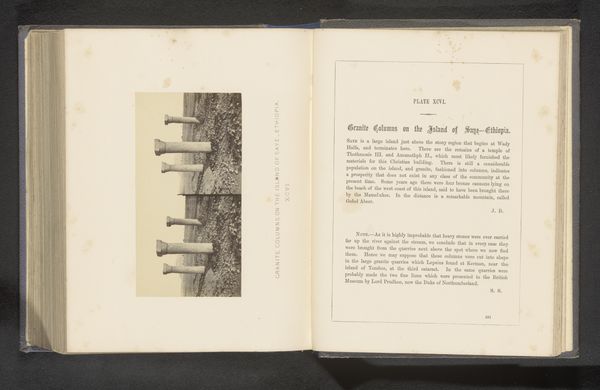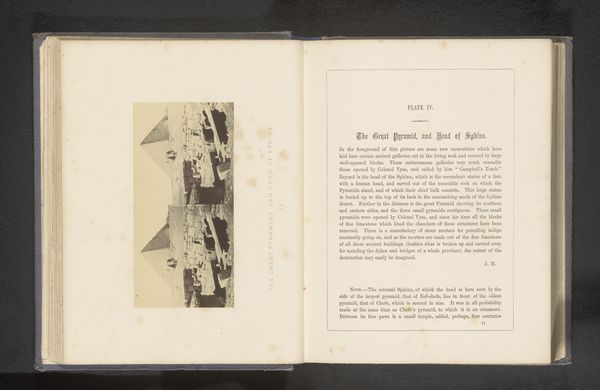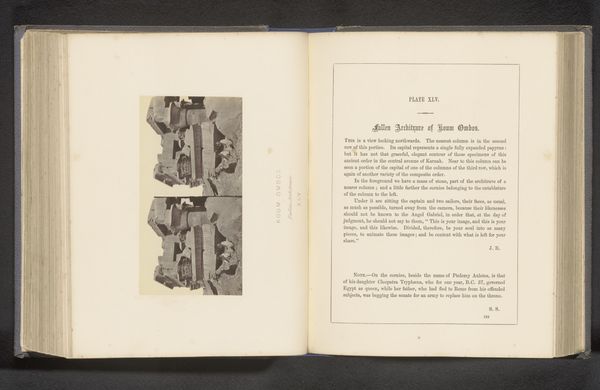
print, photography, gelatin-silver-print, albumen-print
# print
#
landscape
#
photography
#
ancient-mediterranean
#
gelatin-silver-print
#
albumen-print
Dimensions: height 75 mm, width 143 mm
Copyright: Rijks Museum: Open Domain
Curator: This is Francis Frith’s “Landschap aan de Nijl,” or "Landscape on the Nile" in English. It dates to before 1862. As you can see, the piece uses the albumen silver print and gelatin silver print methods. It's currently held at the Rijksmuseum. What strikes you about this photograph, Editor? Editor: Well, there's this immediate feeling of monumental timelessness, right? But it's oddly intimate because of its format, like a precious secret whispered from across centuries. Almost feels like looking into one's soul. But who would have two souls neatly stacked on top of each other, and what can it mean?! Curator: Well, considering its placement within an album, it's designed to reveal that "intimate timelessness," that thread that carries cultural memory. Nile is central in Egyptian civilization as the core around which everything unfolds. The landscape becomes a symbolic space loaded with meaning beyond a pretty picture. Editor: You're making me think of water as a character and time bending around it in loops. There's something hypnotic here that almost turns the mind upside down. Curator: Water often symbolizes fluidity and transformation across cultures. Its depiction here hints at a deeper cycle of change and permanence—a dance of death and rebirth—central to ancient beliefs. Photography capturing ancient scenery could even imply freezing history. Editor: Precisely, because it feels less about a literal river and more about time collapsing! This isn’t about geography. It’s about epochs bleeding into each other in our heads! Photography itself is such a powerful way of preserving such memories, almost like reliving moments we never actually experienced! Curator: And don't forget how crucial the visual medium is, and was, to transmitting these mythic, symbolic associations to newer audiences! In ancient societies, landscape and landmarks acted like communal history books, but photography served similar purpose as printing and oral history. The ability to see opens dialogues we previously had no chance to explore. Editor: Agreed, and I'm sure the artist's choices regarding light and shadow added even more weight and cultural information into the composition. What a treasure! Curator: It certainly is. Examining "Landschap aan de Nijl" unveils a nexus between ancient symbolism, photographic artistry, and enduring human connections. Editor: I guess I won’t think about a double soul next time I'll look at such artwork. Fascinating, thank you.
Comments
No comments
Be the first to comment and join the conversation on the ultimate creative platform.
